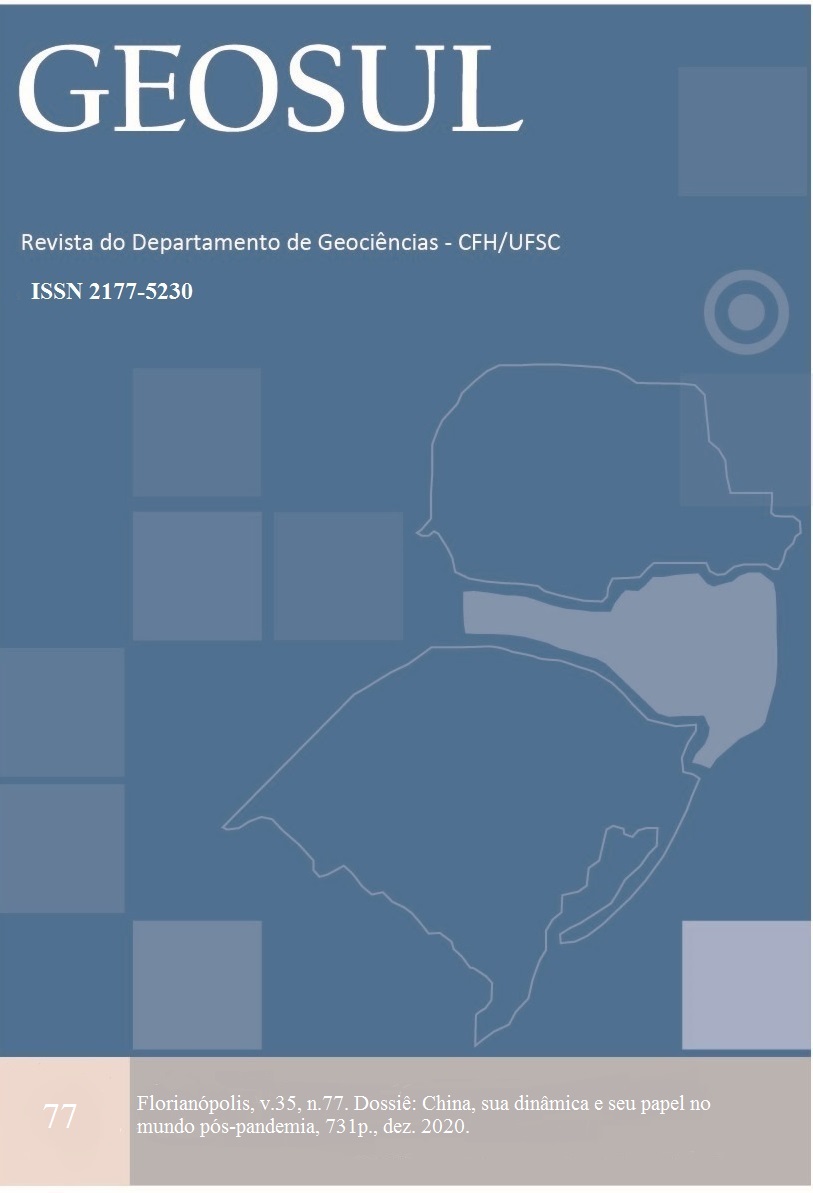Os esforços de modernização do arsenal nuclear chinês: balanceamento interno e transformação no sistema internacional contemporâneo
DOI:
https://doi.org/10.5007/2177-5230.2020v35n77p296Resumo
O artigo visa a analisar os investimentos chineses em seu arsenal nuclear nos anos que sucederam ao fim da Guerra Fria. Argumenta-se que os esforços de modernização das armas nucleares chinesas estão inseridos no âmbito de um processo de “balanceamento interno” empreendido pela China em relação aos EUA. Para desenvolver esse argumento, a primeira seção deste artigo apresenta algumas considerações sobre o fenômeno do “balanceamento interno”, esclarecendo seu embasamento conceitual-teórico. Em seguida, realiza-se uma breve revisão histórica do programa nuclear chinês durante a Guerra Fria. Finalmente, serão avaliados os esforços contemporâneos de modernização dos arsenais nucleares chineses à luz do modelo teórico que auxilia na verificação empírica do fenômeno do balanceamento interno.
Referências
CHASE, Michael S.; ERICKSON, Andrew S.; YEAW, Christopher. Chinese Theater and strategic missile force modernization and its implications for the United States, Journal of Strategic Studies, v. 32, n. 1, p. 67-114, 2009.
BIN, Li. Paper tiger with whitened teeth. China Security, p. 78 – 89, Autumn 2006.
DEPARTMENT OF DEFENSE OF THE UNITED STATES OF AMERICA; Annual report to Congress: military and security developments involving the People’s Republic of China, 2010.
FRAVEL, M. Taylor; MEDEIROS, Evan S. China’s search for assured retaliation. The evolution of Chinese nuclear strategy and force structure. International Security, v. 35, n. 2, p. 48–87, Fall 2010.
GILL, Bates; MULVENON, James; STOKES, Mark. The Chinese Second Artillery Corps: transition to credible deterrence. In: MULVENON, James; YANG, Andrew (Eds.). The People's Liberation Army as organization. RAND, 2002, p. 510-586.
GILL, Bates; NI, Adam. The People’s Liberation Army Rocket Force: reshaping China’s approach to strategic deterrence, Australian Journal of International Affairs, 2019. Disponível em: https://doi.org/10.1080/10357718.2018.1545831. Acesso em 26 set. 2020.
GOLDSTEIN, Avery. Deterrence and security in the 21st century. China, Britain, France and the enduring legacy of nuclear revolution. Stanford: Stanford University Press, 2000.
JEFFREY, G. The minimal means of reprisal. China’s search for security in the nuclear age. Cambridge: The MIT Press, 2007.
JOHNSTON, Alastair Iain. China's New "Old Thinking": The Concept of Limited Deterrence. International Security, v. 20, n. 3, p. 5-42, Winter, 1995-1996.
KRISTENSEN, Hans M.; NORRIS, Robert S.; MCKINZIE, Matthew G. Chinese nuclear forces and U.S. nuclear war planning. The Federation of American Scientists & The Natural Resources Defense Council. November 2006.
KRISTENSEN, Hans M.; NORRIS, Robert S. Global nuclear weapons inventories, 1945-2010. Bulletin of the Atomic Scientists, v. 66, n. 4, p. 77-83, 2010.
KRISTENSEN, Hans M.; NORRIS, Robert S. Chinese nuclear forces, 2011. Bulletin of the Atomic Scientists, v. 67, n. 6, p. 81-87, 2011.
KRISTENSEN, Hans; KORDA, Matt. Chinese nuclear forces, 2019. Bulletin of the Atomic Scientists 2019, v. 75, n. 4, p. 171–178, 2019. Disponível em: https://www.tandfonline.com/doi/pdf/10.1080/00963402.2019.1628511?needAccess=true. Acesso em 21 mai. 2020
KULACKI, Gregory. China’s Nuclear Arsenal: status and evolution. Union of concerned scientists. October 2011.
LEWIS, Wilson John & LITAI, Xue. China builds the bomb. Stanford: Stanford University Press, 1988.
LEWIS, Wilson John; HUA, Di. China ballistic missile programs. Technologies, strategies, goals. International Security, v. 17, n. 2, Fall 1992.
LEWIS, Wilson John & LITAI, Xue. China’s strategic seapower. The politics of force modernization in the nuclear world. Stanford: Stanford University Press, 1994.
LIEBER, Keir; PRESS, Daryl. The end of mad? The nuclear dimension of U.S. primacy. International Security, v. 30, n. 4, p. 7-44, Spring 2006.
LIEBER, Keir; PRESS, Daryl. U.S. nuclear primacy and the future of the Chinese deterrent. China Security, p.66 -89, Winter 2007.
WORTZEL, Larry M. China’s nuclear forces: operations, training, doctrine, command, control, and campaign planning. May 2007. Available at: www.StrategicStudiesInstitute.army.mil. Access on 10th October, 2011.
YOSHIHARA, Toshi; HOLMES, James. Red star over the Pacific. China’s rise and the challenge to U.S. marine strategy. Annapolis: Naval Institute Press, 2010.
YUNZHU, Yao. Chinese Nuclear Policy and the future of minimum deterrence. Strategic Insights, v.4 , n. 9, September 2005.
ZHANG, Hui. The defensive nature of China's "underground great wall". Bulletin of the Atomic Scientists. 16 January 2012.
Downloads
Publicado
Edição
Seção
Licença

Este trabalho está licenciado com uma Licença Creative Commons - Atribuição 4.0 Internacional.





